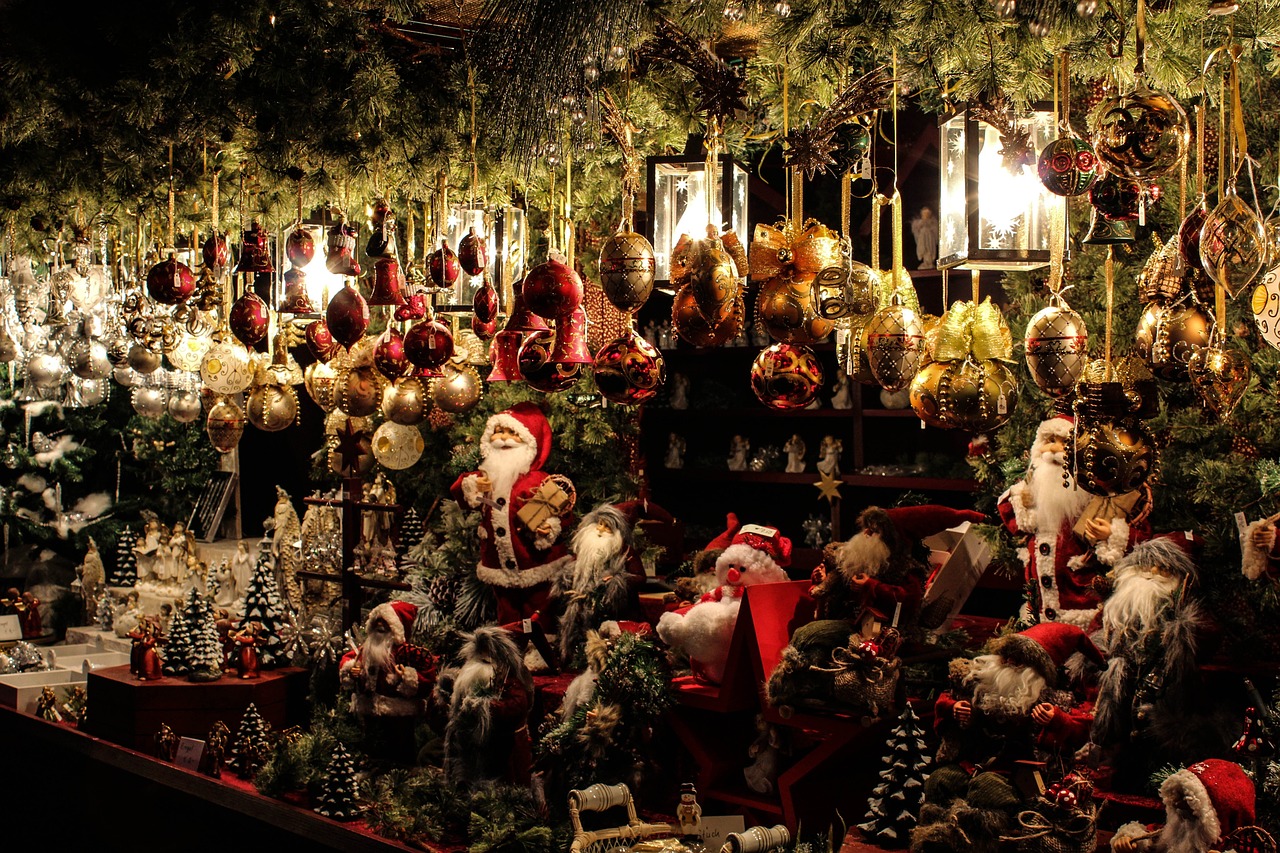Explore the vibrant world of Thai floating markets, where culinary delights and rich cultural experiences converge. These bustling marketplaces, set on serene waterways, offer a unique way to savor authentic Thai street food while immersing yourself in local traditions. This guide will lead you through the best floating markets in Thailand, highlighting must-try dishes and essential tips for an unforgettable visit.
Floating markets are unique marketplaces where vendors sell a variety of goods directly from their boats. Originating in the 19th century, these markets are an integral part of Thai culture, showcasing local life and providing visitors with a chance to indulge in delicious street food. They are often characterized by vibrant colors, lively interactions, and the enticing aromas of freshly cooked dishes.
Visiting floating markets is not just about shopping; it’s an immersive cultural experience. Tourists can enjoy an authentic atmosphere, interact with friendly vendors, and discover the rich culinary heritage of Thailand. The vibrant ambiance, combined with the unique setting, makes floating markets a must-visit for anyone looking to explore the heart of Thai culture.
Several floating markets stand out as essential destinations for food lovers. Each market has its own charm and specialties, making them unique stops on your culinary journey through Thailand.
- Damnoen Saduak Floating Market: Known as the most famous floating market, Damnoen Saduak is a bustling hub filled with colorful boats and a variety of street food, including fresh fruits, local snacks, and traditional Thai dishes.
- Taling Chan Floating Market: A popular weekend destination in Bangkok, Taling Chan is celebrated for its authentic atmosphere and delicious seafood dishes. The market is a favorite among locals and tourists alike.
- Amphawa Floating Market: This market is renowned for its evening ambiance, where visitors can enjoy boat rides while sampling delectable street food. Amphawa is especially famous for its grilled seafood and coconut desserts.
The street food available at floating markets is incredibly diverse, ranging from sweet treats to savory dishes. Here are some iconic Thai street foods you must try:
- Pad Thai: This classic stir-fried noodle dish is a must-try, often served with fresh lime and peanuts.
- Som Tum: A spicy green papaya salad that is both refreshing and flavorful.
- Kanom Krok: A delightful coconut pudding that is crispy on the outside and soft on the inside.
Navigating floating markets can be an adventure in itself. Understanding the layout and typical offerings can enhance your experience. Look for signs or ask locals for directions to avoid missing out on must-try dishes. It’s also advisable to carry cash, as most vendors do not accept cards.
Timing your visit is crucial for a great experience. Early mornings and weekends are typically the best times to enjoy the lively atmosphere and freshest food. Arriving early allows you to beat the crowds and experience the markets at their most vibrant.
Planning ahead can significantly enhance your visit. Here are some practical tips:
- Arrive early to enjoy the freshest food and avoid large crowds.
- Be prepared to bargain; haggling is part of the experience.
- Try a variety of dishes to fully experience the market’s offerings.
With this guide, you are now equipped to explore the enchanting world of Thai floating markets. Enjoy the culinary delights and cultural richness that await you!

What Are Floating Markets?
Floating markets are a captivating aspect of Thai culture, offering a unique shopping experience that combines commerce with a vibrant social atmosphere. These markets, where vendors sell their goods directly from boats, are not just places to shop; they are a window into the daily lives of the local community. The experience of visiting a floating market is enriched by the variety of products available, including fresh produce, handicrafts, and, most importantly, an array of delicious street food.
Floating markets are traditional marketplaces that operate on waterways, primarily in Thailand. Vendors set up their stalls on boats, allowing them to navigate through the canals and rivers, bringing their goods directly to customers. This unique shopping method has its origins in the historical trading practices of Thailand, where rivers served as vital transportation routes for trade.
These markets are not only about commerce; they are a vibrant display of local culture. Visitors can immerse themselves in the colorful sights and sounds of the market as they interact with friendly vendors and sample a variety of foods. Each floating market offers a unique experience, showcasing regional specialties that reflect the local culinary traditions.
Visiting a floating market is an enriching experience that goes beyond mere shopping. It provides an opportunity to witness the daily life of local Thai people. Tourists can enjoy the lively atmosphere while tasting authentic street food, which is often prepared right in front of them. The markets are typically bustling with activity, filled with the aromas of grilled meats, fresh fruits, and sweet desserts. This immersive environment allows visitors to engage with the culture in a way that traditional markets cannot.
Several floating markets are renowned for their unique offerings and vibrant atmospheres. Each market has its own character, making them essential stops for anyone looking to explore Thai cuisine.
- Damnoen Saduak Floating Market: This is the most famous floating market in Thailand, located about 100 kilometers southwest of Bangkok. It is known for its bustling atmosphere, where colorful boats filled with fruits, vegetables, and various local snacks create a lively scene. Visitors can enjoy authentic Thai dishes like Pad Thai and Tom Yum Goong while exploring the market.
- Taling Chan Floating Market: Situated in Bangkok, Taling Chan is a popular weekend destination. It offers a more relaxed atmosphere compared to Damnoen Saduak. The market is famous for its fresh seafood, with many vendors serving grilled fish and prawns right off the boat. It’s a favorite among locals and tourists alike.
- Amphawa Floating Market: Known for its evening market, Amphawa is a charming destination that attracts visitors with its picturesque setting. Here, you can find a variety of street food, including coconut pancakes and spicy seafood salads, all while enjoying the serene ambiance of the canals.
The street food at floating markets is a highlight of the experience. The variety is vast, catering to different tastes and preferences. Some must-try dishes include:
- Som Tum: A spicy green papaya salad that is both refreshing and flavorful.
- Kanom Krok: A sweet coconut pudding served in small, round cups.
- Grilled Satay: Skewered meats marinated in spices and grilled to perfection.
Sampling these dishes allows visitors to appreciate the rich flavors and culinary traditions of Thailand.
Navigating a floating market can be an adventure. It’s essential to be aware of the layout and typical offerings to maximize your experience. Most markets have designated areas for food, crafts, and other goods, making it easier to find what you’re looking for. Engaging with vendors and asking for recommendations can lead to delightful surprises.
Timing your visit to a floating market can significantly enhance your experience. Early mornings are often the best time to visit, as the markets are less crowded, and you can enjoy the freshest offerings. Weekends are also popular, but they tend to be busier, providing a more lively atmosphere.
To make the most of your floating market visit, consider these tips:
- Arrive early to avoid crowds and experience the market at its best.
- Be prepared to bargain; it’s a common practice in Thailand.
- Try a variety of dishes to fully immerse yourself in the local cuisine.
Floating markets are an integral part of Thailand’s cultural landscape, offering visitors a unique blend of shopping, dining, and local interaction. Whether you are a food lover or a cultural enthusiast, these markets promise an unforgettable experience.

Why Visit Floating Markets in Thailand?
When it comes to experiencing the vibrant culture of Thailand, few activities can compare to a visit to the floating markets. These unique marketplaces not only offer a feast for the senses but also provide an insightful glimpse into the daily lives of local Thais. In this section, we delve into the reasons why visiting floating markets is a must for anyone seeking to immerse themselves in Thai culture and cuisine.
Floating markets in Thailand are more than just places to shop; they are cultural hubs where tradition and modernity blend seamlessly. Tourists can expect to encounter a lively atmosphere filled with the sounds of bargaining, laughter, and the gentle lapping of water against the boats. Here are some compelling reasons to visit:
- Authentic Culinary Experiences: One of the biggest draws of floating markets is the street food. From Pad Thai to mango sticky rice, the variety is astounding. Vendors often prepare food right in front of you, ensuring freshness and authenticity.
- Vibrant Atmosphere: The sights and sounds of a floating market are unlike any other. Colorful boats filled with fruits, vegetables, and local delicacies create a picturesque scene that is perfect for photography enthusiasts.
- Local Interactions: Engaging with local vendors can lead to memorable experiences. Many are eager to share their stories and cooking tips, giving you a deeper understanding of Thai culture.
- Unique Shopping Opportunities: Beyond food, floating markets offer a range of local products, including handmade crafts, clothing, and souvenirs that reflect the rich heritage of Thailand.
Visiting these markets provides a unique opportunity to taste authentic Thai flavors while enjoying the scenic waterways that define the landscape. As you navigate through the bustling stalls, you’ll find that each market has its own unique character and specialties, making every visit a new adventure.
Additionally, floating markets often operate during the early morning hours, allowing visitors to experience the market before the crowds arrive. This is the perfect time to savor the freshest offerings and enjoy a more intimate atmosphere. As the day progresses, the markets fill with both locals and tourists, creating a lively buzz that is infectious.
For those looking to explore beyond the food, many floating markets also feature live music and cultural performances, adding another layer of entertainment to your visit. Whether it’s traditional Thai dance or live bands, these performances showcase the rich artistic heritage of Thailand.
In conclusion, a visit to Thailand’s floating markets is an enriching experience that combines culinary delights, vibrant local culture, and unique shopping opportunities. Whether you are a food lover, a cultural enthusiast, or simply looking for a fun day out, the floating markets promise an unforgettable adventure.
Top Floating Markets in Thailand
When it comes to exploring the rich culinary landscape of Thailand, floating markets are an absolute must-visit for any food lover. These vibrant markets not only showcase the diverse flavors of Thai street food but also offer a unique glimpse into the local culture and lifestyle. Each floating market has its own distinct charm and specialties, making them essential stops on your culinary journey through Thailand.
1. Damnoen Saduak Floating Market
Known as the most famous floating market in Thailand, Damnoen Saduak is a bustling hub of activity that attracts visitors from around the globe. Located just a short drive from Bangkok, this market is characterized by its colorful wooden boats filled with an array of fresh produce and mouthwatering street food. Here, you can indulge in authentic Thai dishes such as pad thai, mango sticky rice, and coconut pancakes, all while enjoying the lively atmosphere. The best time to visit is early in the morning when the market is at its peak.
2. Taling Chan Floating Market
If you’re looking for a more local experience, the Taling Chan Floating Market in Bangkok is a fantastic option. This weekend market is known for its laid-back vibe and delicious seafood offerings. Here, you can savor grilled fish, shrimp, and other fresh seafood dishes prepared right before your eyes. The market also features live music and traditional Thai cultural performances, making it a great spot for both food and entertainment.
3. Amphawa Floating Market
Located near the historic town of Amphawa, this floating market is particularly famous for its evening ambiance. As the sun sets, the market comes alive with the glow of lanterns and the sounds of vendors calling out to customers. Amphawa is renowned for its delicious Thai desserts and unique dishes such as boat noodles. Don’t forget to try the local specialty, roti sai mai, a sweet cotton candy wrapped in a thin pancake.
4. Khlong Lat Mayom Floating Market
Khlong Lat Mayom is another hidden gem that offers an authentic experience away from the tourist crowds. This market is known for its fresh produce and home-cooked meals. Here, you can sample traditional dishes like som tam (papaya salad) and kanom jeen (rice noodles with curry). The market also has a lovely riverside setting, making it perfect for leisurely exploration.
5. Bang Nam Pheung Floating Market
Located in the outskirts of Bangkok, Bang Nam Pheung is a charming floating market that is less commercialized than others. It offers a delightful selection of local snacks and dishes, including Thai-style pancakes and fresh fruit smoothies. The market is surrounded by lush greenery, providing a serene backdrop for your culinary adventure.
Each of these floating markets offers a unique experience that is sure to delight your taste buds and immerse you in Thai culture. From the bustling atmosphere of Damnoen Saduak to the tranquil setting of Bang Nam Pheung, there is something for everyone to enjoy. So, make sure to include these floating markets in your itinerary for an unforgettable culinary journey through Thailand!
Damnoen Saduak Floating Market
is often regarded as Thailand’s most iconic floating market, attracting visitors from around the globe. This vibrant marketplace is a feast for the senses, where the sights, sounds, and smells create an unforgettable experience. The market is located in Ratchaburi Province, just a short drive from Bangkok, making it an accessible destination for tourists and locals alike.
The market is characterized by its colorful wooden boats filled with an array of goods, from fresh produce to handcrafted souvenirs. As you navigate through the narrow canals, you’ll be greeted by friendly vendors eager to showcase their offerings. The atmosphere is lively, with the sounds of haggling and laughter filling the air. It’s a place where you can truly immerse yourself in the local culture.
At Damnoen Saduak, you can expect a bustling environment teeming with life. The market operates daily, but it’s best to visit in the early morning when the vendors are just setting up. This is when you’ll find the freshest produce and the most vibrant atmosphere. The market is not just about shopping; it’s also a culinary adventure. You can sample a variety of street foods, including:
- Fried Bananas – Crispy and sweet, these are a must-try snack.
- Som Tam – A spicy green papaya salad that packs a punch.
- Boat Noodles – Delicious bowls of noodles served right from the boat.
- Fresh Fruits – Juicy tropical fruits like mangoes and coconuts are abundant.
Getting to Damnoen Saduak is relatively straightforward. You can hire a taxi or join a guided tour from Bangkok. The drive takes about 1.5 to 2 hours, depending on traffic. Once you arrive, you’ll find various options for exploring the market, including renting a boat or walking along the canals. Both options provide a unique perspective of the vibrant market life.
To make the most out of your visit, consider the following tips:
- Arrive Early: The market is less crowded in the morning, allowing you to enjoy a more relaxed experience.
- Bring Cash: Most vendors do not accept credit cards, so it’s best to have some Thai Baht on hand.
- Negotiate Prices: Bargaining is common at floating markets, so don’t hesitate to ask for a better price.
- Try Different Foods: Sample a variety of dishes to get a true taste of local cuisine.
In addition to the food, Damnoen Saduak Floating Market offers a glimpse into the daily lives of the locals. You’ll see families working together on their boats, selling goods that have been passed down through generations. This market is not just a tourist attraction; it’s a vital part of the community, showcasing the rich cultural heritage of Thailand.
Whether you’re a foodie, a culture enthusiast, or simply looking for a unique experience, a visit to is sure to be a highlight of your trip to Thailand. The combination of delicious food, colorful scenery, and the warm hospitality of the vendors creates an experience that is both enjoyable and memorable.
Taling Chan Floating Market
is a hidden gem nestled in the heart of Bangkok, attracting both locals and tourists seeking an authentic Thai experience. Unlike the more commercialized floating markets, Taling Chan offers a genuine atmosphere where visitors can immerse themselves in the rich culture and culinary delights of Thailand.
This vibrant market operates primarily on weekends and boasts a variety of delicious seafood dishes that have made it a favorite among food enthusiasts. The market is characterized by its picturesque setting, with vendors selling their goods from traditional wooden boats along the serene canals. The atmosphere is lively, filled with the sounds of vendors calling out to customers and the sizzling of food being prepared right before your eyes.
One of the standout features of Taling Chan Floating Market is its focus on fresh seafood. Visitors can indulge in a variety of dishes, including grilled fish, prawns, and squid, all cooked to perfection. The market also offers an array of other Thai delicacies, such as som tam (papaya salad) and pad thai, ensuring that there is something for everyone.
Reaching Taling Chan Floating Market is quite convenient. Located approximately 12 kilometers from the city center, it is easily accessible by taxi or public transport. The best way to arrive is by taking the BTS Skytrain to Bang Wa Station, followed by a short taxi ride. Alternatively, you can take a boat ride along the canals, adding an extra layer of adventure to your journey.
Upon arrival, visitors are greeted by a bustling market atmosphere filled with colorful stalls and friendly vendors. The market is not just a place to eat; it’s also a cultural experience. You can explore local crafts, enjoy live music, and even participate in traditional boat rides. The market is surrounded by lush greenery, providing a serene backdrop that contrasts beautifully with the vibrant colors of the stalls.
- Arrive Early: To fully enjoy the market, it’s best to arrive early in the morning when the vendors are just setting up and the seafood is at its freshest.
- Try Everything: Don’t hesitate to sample a variety of dishes. Each vendor has their own specialties, and trying a bit of everything can enhance your experience.
- Interact with Vendors: Engaging with the vendors can provide insights into their products and cooking methods, enriching your visit.
In conclusion, Taling Chan Floating Market offers a unique blend of culinary delights and cultural experiences that are hard to find elsewhere. Its authentic atmosphere, combined with the delicious food options, makes it a must-visit destination for anyone traveling to Bangkok. Whether you are a local or a tourist, the market promises a memorable experience filled with flavors, sights, and sounds that capture the essence of Thai culture.
What Street Foods to Try at Floating Markets?
When visiting the enchanting floating markets of Thailand, one of the most delightful experiences is indulging in the local street food. The variety of flavors and dishes available is a true testament to Thailand’s rich culinary heritage. From sweet to savory, here’s a closer look at some iconic Thai street foods you simply must try during your visit.
Thai street food is renowned for its bold flavors, fresh ingredients, and affordability. It reflects the diverse cultural influences that have shaped Thailand’s cuisine over the centuries. The floating markets offer a unique opportunity to taste these dishes while enjoying the vibrant atmosphere of the market.
- Pad Thai: This iconic stir-fried noodle dish is a must. Made with rice noodles, eggs, tofu or shrimp, and flavored with tamarind paste, it’s often garnished with peanuts and lime.
- Som Tum (Green Papaya Salad): A refreshing salad made from shredded green papaya, tomatoes, green beans, and a spicy lime dressing. It’s a perfect balance of sweet, sour, and spicy.
- Boat Noodles: Traditionally served from boats, these flavorful noodles come in a rich broth, often topped with beef or pork. The combination of spices makes this dish unforgettable.
- Mango Sticky Rice: A beloved dessert, this dish features sweet sticky rice paired with ripe mango slices and drizzled with coconut milk. It’s a delightful way to end your meal.
- Khao Niew Mamuang (Sticky Rice with Mango): This sweet treat is a favorite among locals and tourists alike, showcasing the perfect harmony of flavors and textures.
- Grilled Meat Skewers: Whether it’s chicken, pork, or beef, these skewers are marinated in a blend of spices and grilled to perfection, making for a tasty snack on the go.
- Roti (Thai Pancakes): Often filled with banana and drizzled with condensed milk, these crispy pancakes are a popular street food that you can find at many floating markets.
To make the most of your street food experience, don’t hesitate to try a variety of dishes. Sample small portions from different vendors to get a full spectrum of flavors. Engaging with the vendors can also enhance your experience; they love sharing the stories behind their dishes.
Yes! Here are some helpful tips:
- Go Early: Arriving early not only helps you avoid crowds but also ensures you get the freshest food.
- Stay Hydrated: The warm weather can be intense, so keep hydrated, especially if you’re indulging in spicy dishes.
- Bring Cash: Most vendors prefer cash payments, so be sure to have enough Thai Baht on hand.
- Be Adventurous: Don’t stick to what you know; try something new and exciting!
Exploring the street food at floating markets is not just about satisfying your hunger; it’s an immersive cultural experience. Each dish tells a story, and every vendor has their unique flair. So, as you navigate through the bustling markets, let your taste buds guide you on this delicious journey.

How to Navigate Floating Markets?
Navigating floating markets can be an exciting adventure filled with vibrant sights, sounds, and flavors. To make the most of your experience, it’s essential to understand the layout and typical offerings of these bustling hubs. This knowledge not only enhances your journey but also ensures you don’t miss out on the must-try dishes that define Thai street food culture.
Floating markets are often organized into sections that cater to specific types of goods. Typically, you will find areas dedicated to fresh produce, cooked meals, and handcrafted goods. Knowing where to go can save you time and help you discover hidden gems. For instance, if you’re a seafood lover, seek out the section where vendors sell freshly caught fish and shellfish, often grilled right on their boats.
The offerings at floating markets are as diverse as the culture itself. Vendors usually sell a variety of dishes, including:
- Pad Thai – A classic stir-fried noodle dish that is a must-try.
- Som Tum – A spicy green papaya salad that packs a punch.
- Boat Noodles – Rich, flavorful soup served in small bowls, perfect for sampling.
- Mango Sticky Rice – A sweet dessert that combines coconut milk with glutinous rice and ripe mango.
Many vendors also offer refreshing drinks such as coconut water and Thai iced tea, perfect for cooling off in the tropical heat.
Interacting with vendors can be part of the fun. Here are some tips:
- Be Polite: A friendly smile and a greeting in Thai, such as “Sawasdee,” can go a long way.
- Ask Questions: Don’t hesitate to inquire about the dishes. Vendors often love to share their stories and recommendations.
- Bargain Wisely: While haggling is common, it’s important to be respectful. Offer a fair price and remember that supporting local vendors is beneficial for the community.
Timing can greatly affect your experience at floating markets. Early mornings are ideal, as you’ll encounter fewer crowds and fresher food. Weekends tend to be busier, but they also offer a lively atmosphere with more vendors present. Arriving early allows you to enjoy the peacefulness of the market before it becomes bustling with activity.
Before setting out, consider planning your route. Some markets are extensive, and without a map, it can be easy to get lost in the maze of boats and stalls. Identify key areas you want to visit and prioritize them based on your culinary interests. This strategy will help you make the most of your time and ensure you sample the best dishes.
While enjoying the delicious offerings, it’s essential to keep safety and hygiene in mind. Always opt for food that is freshly prepared and served hot. Look for busy stalls, as high turnover usually indicates fresher ingredients. Carry hand sanitizer and use it before eating to minimize any health risks.
By understanding the layout, typical offerings, and best practices for navigating floating markets, you can enhance your experience and enjoy the rich tapestry of flavors that Thai street food has to offer. Embrace the adventure and savor every moment!
Best Times to Visit Floating Markets
When planning a trip to Thailand’s famous floating markets, timing your visit is essential for an unforgettable experience. The atmosphere, food quality, and overall enjoyment can vary significantly depending on the time of day and week you choose to go. Here’s a detailed look at the best times to visit floating markets, ensuring you make the most of your culinary adventure.
Visiting floating markets in the early morning offers several advantages. First and foremost, the weather is typically cooler, making for a more comfortable experience as you stroll through the bustling stalls. Additionally, many vendors arrive early to set up their boats, showcasing the freshest produce and food items. This means you can indulge in freshly prepared dishes, from aromatic noodle soups to vibrant fruit smoothies.
Weekends are another prime time to explore floating markets. These days tend to attract a larger crowd, including both locals and tourists, creating a lively atmosphere filled with energy and excitement. The markets come alive with music, laughter, and the enticing aromas of street food. You’ll find a greater variety of vendors and dishes available, as many local families take the opportunity to sell their homemade specialties on weekends.
While visiting during peak hours can enhance the experience, it’s essential to be prepared for larger crowds. The most popular floating markets, such as Damnoen Saduak and Taling Chan, can become quite busy, especially during weekends. If you prefer a more relaxed atmosphere, consider visiting during the late morning or early afternoon, when some visitors have already left, yet the market remains vibrant.
To maximize your floating market experience, arrive early to enjoy the freshest food and avoid the heaviest crowds. Take your time exploring the various stalls, sampling different dishes, and engaging with the friendly vendors. Don’t hesitate to ask questions about the food being offered; many vendors are eager to share their culinary stories and recommendations.
Consider the time of year when planning your visit. The cool season (November to February) is generally the best time to experience floating markets, as the weather is more pleasant. However, during this period, it’s wise to arrive even earlier to secure parking and beat the rush.
Check if there are any local festivals or events during your visit, as these can provide unique experiences and specialty foods not typically available. Markets may host special celebrations that feature traditional Thai performances, crafts, and food, adding an extra layer of cultural immersion to your visit.
In summary, the best times to visit Thailand’s floating markets are early mornings and weekends. Each time slot offers distinct advantages, from fresh food to vibrant atmospheres. By planning your visit wisely, you can ensure that your experience is as enjoyable and enriching as possible.
Tips for an Enjoyable Floating Market Experience
Visiting a floating market in Thailand can be a truly memorable experience, but proper planning is essential to make the most of your trip. Here are some valuable tips to ensure your visit is both enjoyable and fulfilling:
- Arrive Early: The early bird catches the worm! Arriving at the market early not only allows you to beat the crowds but also gives you the chance to enjoy the freshest food offerings. Vendors often start their day with the best ingredients, and you’ll find that the atmosphere is more tranquil in the morning.
- Bargain for Prices: Don’t hesitate to negotiate prices with vendors. Bargaining is a common practice in Thai markets, and you may be able to score some great deals. Just remember to do so politely and with a smile, as this will enhance your interactions and make the experience more enjoyable.
- Try a Variety of Dishes: One of the highlights of visiting a floating market is the diverse range of street food available. Make sure to sample different dishes, from spicy curries to sweet desserts. Each vendor often has their own specialty, and trying various foods will give you a fuller taste of the local cuisine.
- Stay Hydrated: Exploring the market can be exciting but also tiring. Make sure to drink plenty of water, especially if you’re indulging in spicy foods. Many vendors offer refreshing drinks like coconut water or fruit smoothies that can help keep you cool.
- Engage with the Locals: Take the time to chat with the vendors and locals. They often have fascinating stories to share about their products and the market itself. This interaction can enrich your experience and provide insights into Thai culture.
- Bring Cash: Most vendors prefer cash transactions, so it’s wise to bring enough Thai Baht to cover your purchases. Credit cards may not be accepted everywhere, and having cash on hand will make your shopping experience smoother.
- Wear Comfortable Clothing and Footwear: Floating markets can be bustling and require a lot of walking. Dress comfortably and wear sturdy shoes to navigate the uneven surfaces and crowded areas easily.
- Respect Local Customs: Always be respectful of local customs and traditions. This includes asking for permission before taking photos of vendors or their products, as some may prefer not to be photographed.
- Plan Your Route: Familiarize yourself with the layout of the market before diving in. This will help you identify which stalls you want to visit and ensure you don’t miss any must-try dishes.
- Enjoy the Atmosphere: Lastly, take a moment to soak in the vibrant atmosphere of the floating market. The colors, sounds, and smells create a unique sensory experience that is quintessentially Thai.
By following these tips, you can enhance your visit to Thailand’s floating markets and create lasting memories. Enjoy the culinary journey and the rich cultural tapestry that these markets offer!
Frequently Asked Questions
- What are the best floating markets to visit in Thailand?
Some of the top floating markets include Damnoen Saduak, known for its vibrant atmosphere, and Taling Chan, famous for its fresh seafood. Each market offers unique experiences and a variety of delicious street food!
- When is the best time to visit floating markets?
The ideal time to explore floating markets is early in the morning or on weekends. This way, you can enjoy the freshest food and the most lively atmosphere, making your visit unforgettable!
- Is it necessary to bargain at floating markets?
Absolutely! Bargaining is part of the fun at floating markets. Vendors expect some negotiation, so don’t hesitate to haggle a bit to get the best deals on tasty treats.
- What types of street food can I find at floating markets?
You can find a wide array of street food, including pad thai, som tam (papaya salad), and various sweet desserts. Each market has its specialties, so be adventurous and try something new!
- How do I navigate through a floating market?
Getting around is part of the adventure! Most floating markets have a straightforward layout. Just follow the boats and the delicious aromas, and don’t be shy to ask locals for recommendations!














